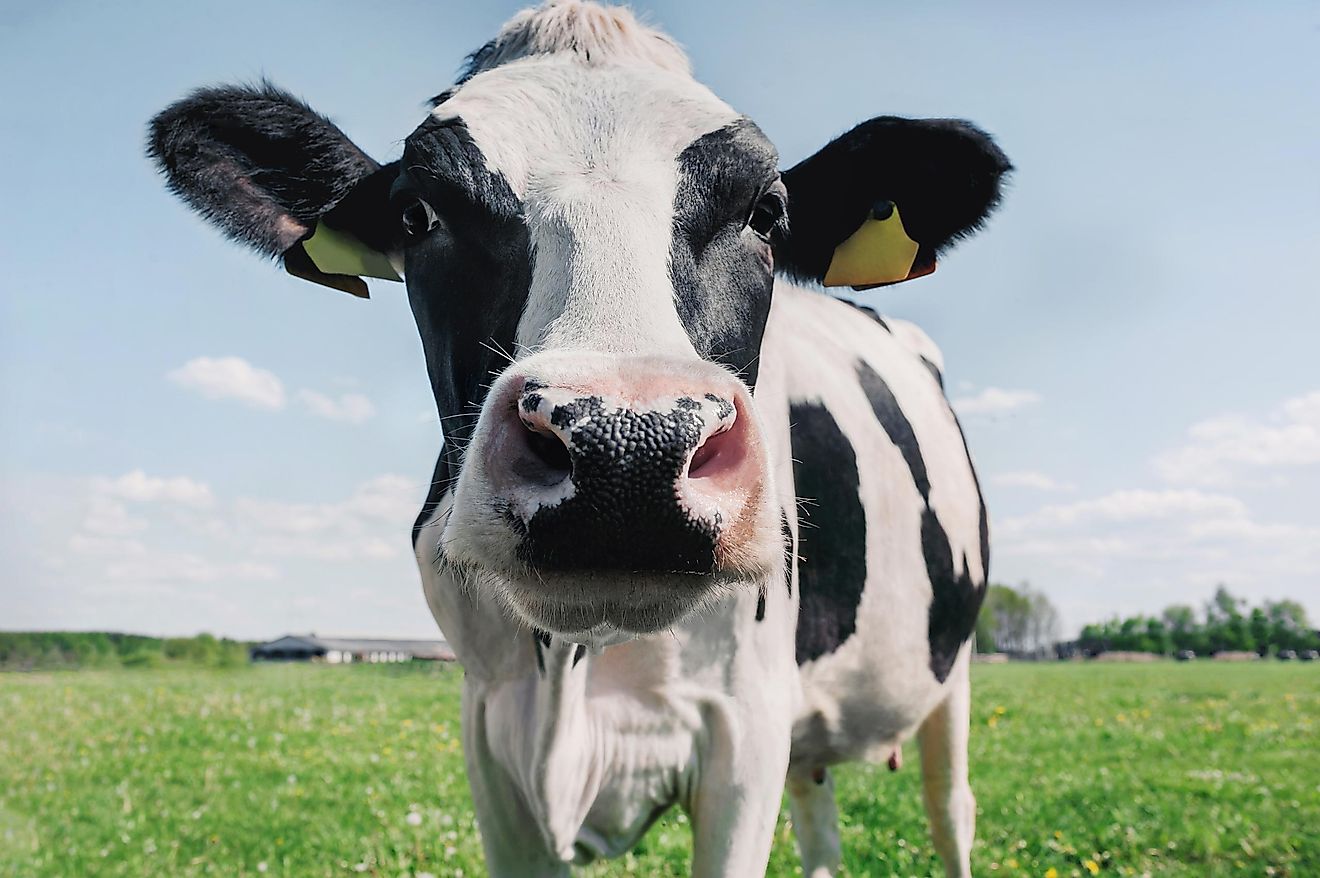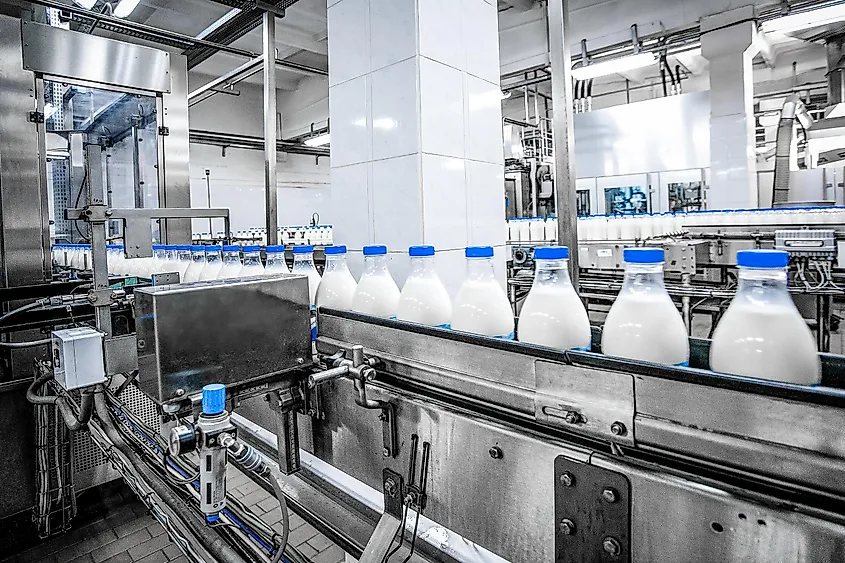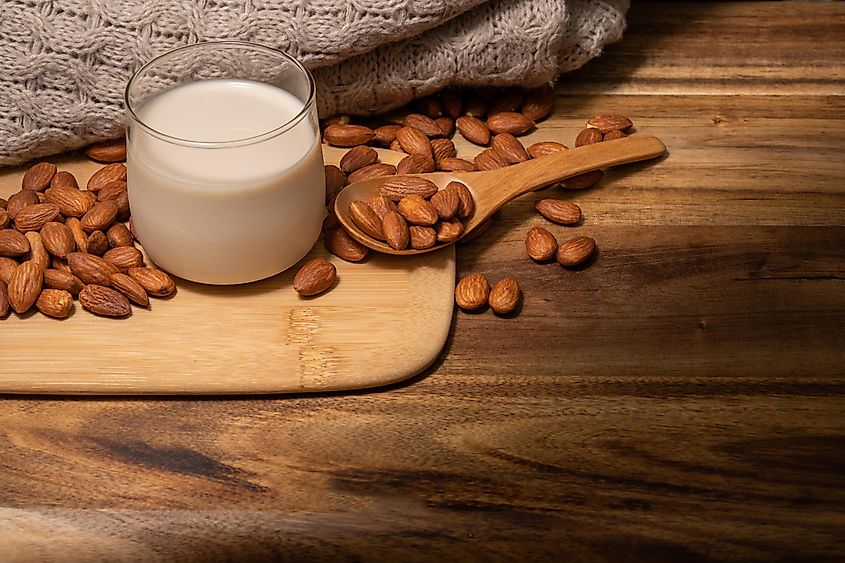Top Milk-Producing US States

- The US dairy Industry is worth $40.5 billion.
- There are approximately 9.3 million dairy cows in the US.
- The industry employs around 150,000 people.
- California is the number one producer of dairy products in the US, followed by Wisconsin and Idaho.
The US dairy industry is worth $40.5 billion. In 2019, all US dairy farmers had a total of more than 9.3 million milk-producing cows. In the same year, the industry produced a total of 218 billion pounds of milk. Most of this milk stays in the US, but as of May 2020, 17.4% of US dairy products were exported to other markets. The largest international market for US dairy is Mexico, which imported more than $1.5 billion in US dairy products in 2019. The second and third largest export markets for US dairy are Southeast Asia, which imported $928 million in dairy products in 2019, and Canada, which imported $807 million in dairy products in the same year. In total, US dairy exports fetched an estimated $6 billion in export revenue in 2019. Hence, supplying milk and milk products in the US and abroad is big business. About 150,000 Americans work in the dairy industry.
How Is Milk Made?

Most people know that milk is essential for making a variety of products, including cheese, butter, yogurt, ice cream, and so forth. Milk has a long history, going as far back as 9,000 BCE, when humans began domesticating animals. In the ancient Greek and Roman eras, humans were making cheese from milk, and this practice slowly spread across Europe.
It was in the 1600s that the first cattle were imported to what became the US by European colonists. Shortly after the American Revolution of 1776, Americans began importing cattle breeds that were more suitable for producing milk. In the 19th century, the US dairy industry grew rapidly with the introduction of new methods and machinery. In the last 50 years, milk production in the US has intensified in order to increase the amount of milk each cow can produce. Over the last 40 years, the amount of milk produced by one cow has doubled. Today, the average US cow produces 7.5 gallons of milk per day.
Milk itself is made of mostly water. In fact, the average cow’s milk contains 87.2% water. The rest of it includes 3.7% milk fat, 3.5% protein, 4.9% lactose, and 0.7% ash. There are small variances with these materials depending on the cow and the breed. Variances in milk content can also depend on the seasons, the content of the animal feed that the cows are fed, as well as several other factors. In some cases, Vitamin D is added to milk. Low fat and skim milk in the US are often supplemented with Vitamin A.
American cows are usually milked twice daily. When this happens, the raw milk is put into a refrigerated milk tank, then trucked to milk processing plants, where a process of filtering out certain materials like bacteria takes place. After being filtered, the milk is fortified with Vitamins A and D, then pasteurized and homogenized. Finally, the milk is cooled, then packaged. In the US, certain regulations and standards must be followed, and the equipment used to process and filter the milk must be cleaned every day.
The Top 3 Milk-Producing States
Virtually every state in the US has dairy cows, though the dairy industry is much more prevalent in some states than in others. The top three milk-producing states are California, Wisconsin, and Idaho.
1. California
The state of California has been the leading milk-producing state in the US since 1993 when it first surpassed Wisconsin. In fact, nearly one-fifth of the milk in the whole country comes from California. Virtually all milk production is based in the northern part of the state. Dairy is one of the leading agricultural commodities in California. In 2016, milk production in the state brought in more than $6 billion of cash receipts. Nearly half of the milk produced in California is used to make cheese in the state. California has 1.73 million cows, each of which produced an average of 22,916 pounds of milk as of 2017.
2. Wisconsin
For a long time, Wisconsin was the center of the US dairy industry, hence the state nickname, “the dairy state.” This changed in 1993, however, when California surpassed Wisconsin as the state with the most milk production. Nevertheless, Wisconsin remains a dairy powerhouse. In 2019, the state’s dairy farmers produced a whopping 30.6 billion pounds of milk. Wisconsin is home to almost 7,000 licensed dairy cow herds or 1,260,000 cows in total. The state produces about 14% of the milk in the US.
3. Idaho
Idaho is perhaps better known for producing potatoes, but it is also the third-biggest milk-producing state in the US. In fact, although the state is third in total annual milk production, it is number one in milk production per capita. Some of the milk produced in Idaho is used to produce one billion pounds of cheese each year. Speaking of cheese, in 2020, an Idaho-based milk producer, Idaho Milk Products, took first place in the 33rd biennial World Championship Cheese Contest.
The Future Of The US Dairy Industry

Lately, the US dairy industry has fallen on hard times. The COVID-19 pandemic has taken a huge toll on America’s dairy producers. For example, demand for dairy products inside the US has fallen significantly as stay-at-home orders have been issued throughout the country, leading to the closure of restaurants, schools, and stores. At the same time, however, cows are still producing milk, so there is too much supply. In fact, many dairy farmers have taken to dumping the milk that they produce because they have nowhere to sell it.
Even before the onset of the COVID-19 pandemic, the American dairy industry already faced significant challenges. One of those challenges is the growth of milk alternatives, most of which are plant-based. These alternatives have become increasingly popular due to the belief held by some that they are healthier than milk. Some consumers also like them because they are more environmentally-friendly, or because they are making efforts to include more plant-based options into their diet. Indeed, the US dairy industry is often a target of environmental activists due to the harmful effects that it has on the environment: cows create a lot of greenhouse gases. Moreover, natural habitat is often destroyed in order to plant the crops that feed cows, or to make the land suitable for cattle grazing. Also a concern is the welfare of dairy cows. Hence, the US dairy industry is no stranger to both short and long-term challenges.
Top Milk Producing US States
| Rank | State | Milk production in pounds | % of total |
|---|---|---|---|
| 1 | California | 40,564,000,000 | 18.57% |
| 2 | Wisconsin | 30,601,000,000 | 14.01% |
| 3 | Idaho | 15,631,000,000 | 7.16% |
| 4 | New York | 15,122,000,000 | 6.92% |
| 5 | Texas | 13,850,000,000 | 6.34% |
| 6 | Michigan | 11,385,000,000 | 5.21% |
| 7 | Pennsylvania | 10,108,000,000 | 4.63% |
| 8 | Minnesota | 9,931,000,000 | 4.55% |
| 9 | New Mexico | 8,187,000,000 | 3.75% |
| 10 | Washington | 6,783,000,000 | 3.11% |











